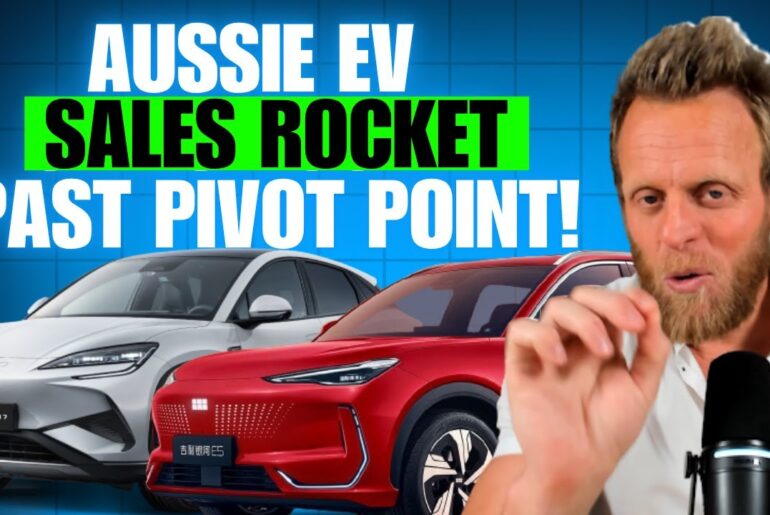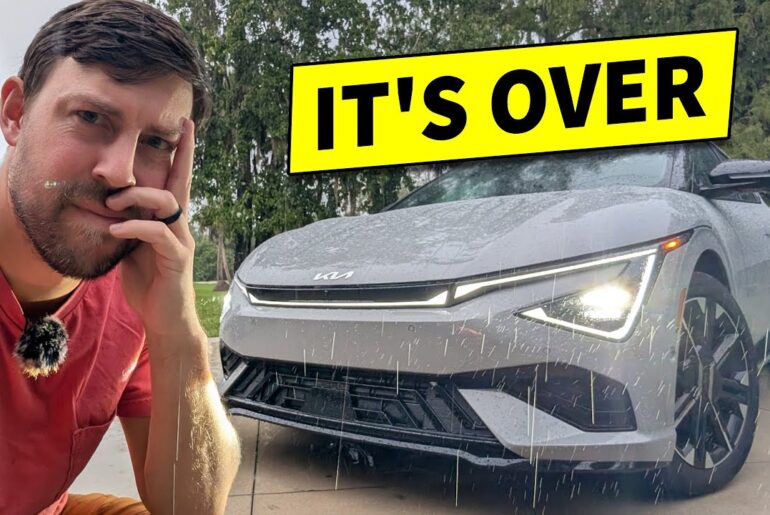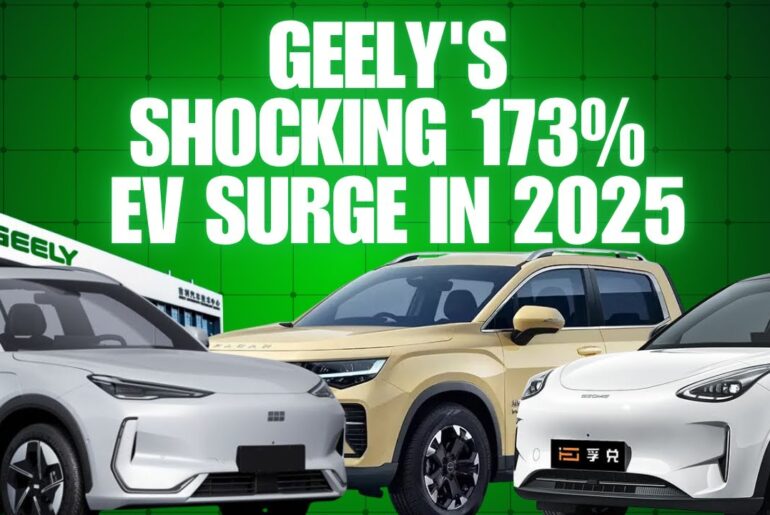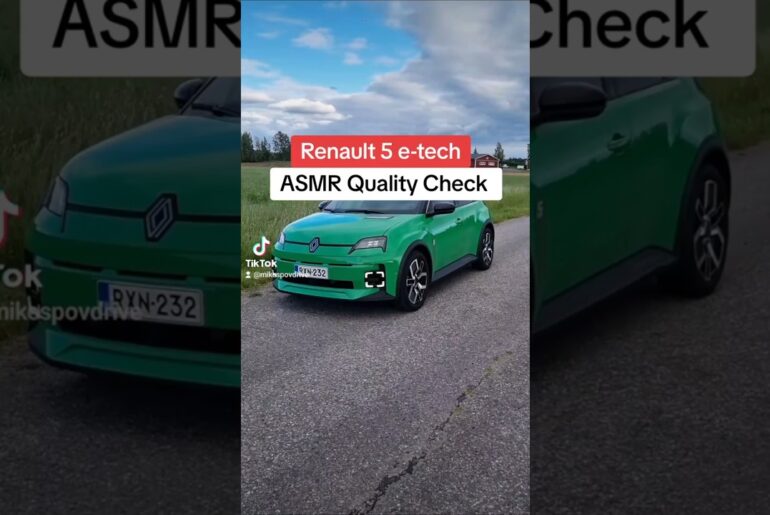Trouble in Paradise: Ford’s Growing Electric Vehicle Crisis Unveiled | Jim Farley’s Reaction
Welcome to Highway Herald. Your Roadmap to the Latest in Auto. Ford, a pioneer among traditional automakers, boldly ventured into the realm of electric vehicles EVs by introducing electrified versions of its two most iconic models, the Mustang and the F-150. However, today this transition is hitting some serious speed bumps.
From disappointing sales figures to challenges in making EVs both reliable and profitable and even resistance from dealerships. Ford’s EV journey is proving to be a bumpy ride. Just a quick note. If you’re a newcomer to our channel, we encourage you to subscribe for more thrilling content from the automobile universe.
Come along as we explore six compelling reasons why we think Ford is on the verge of a major electric vehicle crisis. The Tempest is only just starting. Reason Number 6: Sales Falling Short of the Mark. At first glance, the sales figures for Ford’s F-150, Lightning and Mustang Mach-E paint a promising picture
With a significant increase in recent months. The last quarter of 2023 saw a remarkable 74% growth in sales for the electric pickup. While the Mach-E enjoyed a 3% rise compared to 2022, marking its best year since its 2021 launch. However, a deeper dive reveals a less rosy scenario.
A key driver behind this impressive sales growth is likely The substantial discounts Ford has been offering on the all electric pickup, with prices dropping by up to $15,000 depending on the model. Despite overcoming supply chain issues caused by COVID 19 and global military conflicts, Ford, like other automakers,
Had set their sights much higher for the adoption. Yet EVs remain a hard sell. While early adopters have snapped up their all electric F-150s and Mustangs, the average consumer continues to resist the shift towards electrification. Dealer lots are overflowing with EVs that have been sitting idle for months,
Leading us to believe that Ford is on the brink of its biggest EV crisis yet. Reason Number 5: Ford Dealers Reluctant to Sell EVs. A year ago, Ford CEO Farley had managed to convince two thirds of dealers to fully embrace selling EVs. However, a year later, only half of Ford’s dealers have opted
For the certification program necessary to sell EVs. The rest have chosen to continue with traditional and hybrid cars in 2024. The certification program, which includes investments in charging networks and technician training, costs up to $1 million, making many dealers hesitant. The slower growth of EVs and the uneven pace of electrification
Across the U.S., particularly in rural areas, have compounded the issue. Selling EVs is currently more challenging than selling gas powered vehicles. With supply chain issues resolved and dealer lots full. Dealers can no longer rely on the hefty markups they’ve enjoyed in recent years. In essence, for dealers who took
The leap, EVs are currently more of a challenge than an opportunity. This situation underscores the fact that while the shift to EVs is inevitable, we’re still years, if not decades, away from this becoming a reality. Until then, for many dealers, EVs are currently more trouble than they’re worth.
Reason Number 4: The Reliability Conundrum. Ford’s reputation for reliability has always been a bit of a mixed bag. However, in recent years, things have taken a turn for the worse. A lack of stringent quality control has led to a slew of recalls and customer
Complaints costing the company billions annually to rectify these issues. Not too long ago, Ford CEO Jim Farley acknowledged that quality control was the company’s primary challenge. Many were hopeful that Ford’s foray into electrification would usher in a new era of superior reliability compared to their internal combustion engine vehicles.
Regrettably, this hasn’t been the case. Ford’s EVs are grappling with reliability issues akin to those faced by other EV manufacturers. The mark, for instance, was recalled due to a software glitch that could result in reduced performance or even complete stalling. Despite Ford’s attempts to rectify this issue by urging owners
To get a software update at dealerships, many reported that the problem persisted. Post Update. The F-150 Lightning hasn’t been immune to these issues either. In early 2023, a charging session at one of Ford’s lots in Michigan ended in a fire incident, prompting an immediate recall.
But the battery isn’t the only concern with the all electric F-150. Numerous other issues have been reported ranging from premature rotor wear, brake failure, regenerative braking issues, problems with the anti-lock system to vibrations and more. Reason Number 3: The Cost of Going Electric. While Ford’s EV sales have seen an uptick
From the previous year, it hasn’t translated into profits for the company. Like its counterparts, Ford is still trying to navigate the complexities of the EV economy. Production costs remain high as the company grapples with optimizing the manufacturing process. The pressure from the administration on automakers isn’t helping either.
What’s more concerning is the escalating losses, with an increase in volume. The loss also rose in the third quarter of 2023, reaching $1.3 billion. For context, the EV loss during the same period in 2022 was around $1.1 billion. This is partly due to the substantial discounts the company has been offering.
If we break down this figure by the number of vehicles Ford sold in the third quarter, it turns out that the company lost $36,000 on every EV. In the second quarter, that loss was around $32,350 per vehicle. We estimate that the total loss on EVs for 2023
Was around $4.5 billion, leading us to our next point. Ford’s decision to scale back on EV investments. Reason Number 2: Putting the Brakes on New Investments. Given the circumstances where the company is hemorrhaging billions despite rising sales, it’s no surprise that Ford’s management has had to reassess its electrification strategy.
Specifically, Ford has decided to slow down its investments to conserve capital. The market has proven to be more challenging than anticipated, with consumers being more resistant to electrification than expected, primarily due to high EV prices and inadequate infrastructure. As a result, Ford is now deferring $12 billion in planned investments related to electrification.
Among the measures taken was the decision to slow down the production of the Mustang. Mach-E. Additionally, the construction of the second blue Oval Battery plant in Kentucky, a joint venture with Kaixin, has been delayed. Ford’s management is still undecided on whether or how to proceed with the Battery Park Michigan plant,
Which is expected to cost around $3.5 billion. This is just the beginning. We may see more delays in the future. Reason Number 1: Farley’s Wake-Up Call. Last year, Ford CEO Farley embarked on a 650 mile journey from San Francisco to Las Vegas in his F-150 Lightning. This trip was an eye opener,
Revealing the hurdles of rapid electrification and EV ownership. The primary issue was charging a journey of this distance could be covered on a single tank of gas and many cars, including some versions of the gas powered F-150. However, the electric F-150 could only cover 230 miles on a single charge, 320.
For the long range version, Farley had to charge his truck multiple times, facing numerous challenges. For instance, at a popular charging station in Coalinga, he could only access a low speed charger, adding just 40% battery in about 40 minutes. This experience highlighted the current limitations of EV charging technology,
Which is still far from matching the convenience of gas powered vehicles. The transition to EVs is inevitable, but we’re still years, if not decades away. Factors like charging time, infrastructure, battery cost and lifespan need significant improvements. Given these challenges, it’s clear that Ford will be adopting
A more cautious approach to electrification in the coming years. Thank you for joining us on this journey. Don’t forget to subscribe to Highway Herald to stay updated on the latest vehicle updates and upcoming videos. See you next time.
In this video, we delve into the challenges Ford is facing in its journey towards electrification. We explore the reasons behind the slow adoption of EVs and the hurdles Ford is encountering. Join us on this insightful journey and discover why we believe Ford is on the brink of its biggest EV crisis yet.
✳️ 00:00 | Introduction
🛻 00:54 | Reason Number 6: Sales Falling Short of the Mark
🛻 02:04 | Reason Number 5: Ford Dealers Reluctant to Sell EVs
🛻 03:13 | Reason Number 4: The Reliability Conundrum
🛻 04:37 | Reason Number 3: The Cost of Going Electric
🛻 05:45 | Reason Number 2: Putting the Brakes on New Investments
🛻 06:44 | Reason Number 1: Farley’s Wake-Up Call
In this video, we delve into the challenges Ford is facing in its journey towards electrification. We explore the reasons behind the slow adoption of EVs and the hurdles Ford is encountering. Join us on this insightful journey and discover why we believe Ford is on the brink of its biggest EV crisis yet.
#HighwayHerald #electricvehicle #electrictruck #electriccar #truckreview #carreview #suvreview
🔔 Don’t forget to ring the bell icon for instant notifications on our latest videos. Enjoyed the ride? Please give this video a thumbs up and spread the highway vibes to your friends!
Keep your engines running for more content on new arrivals, head-to-head battles, and in-depth explorations in the realm of vehicles!
Disclaimer: This video remains unbiased and unsponsored. Views and opinions belong solely to Highway Herald.






